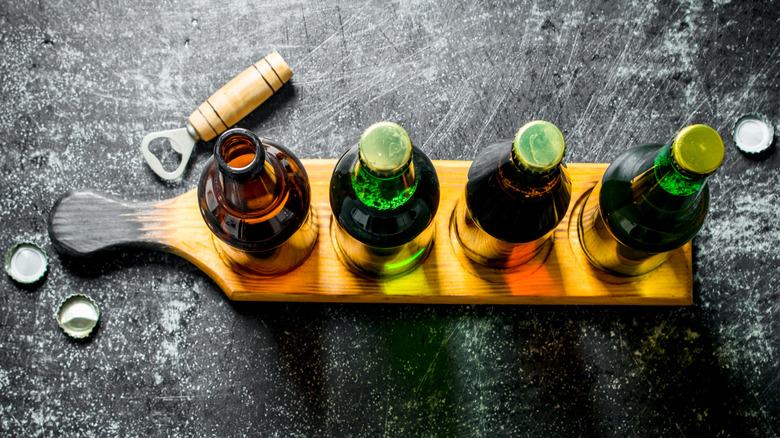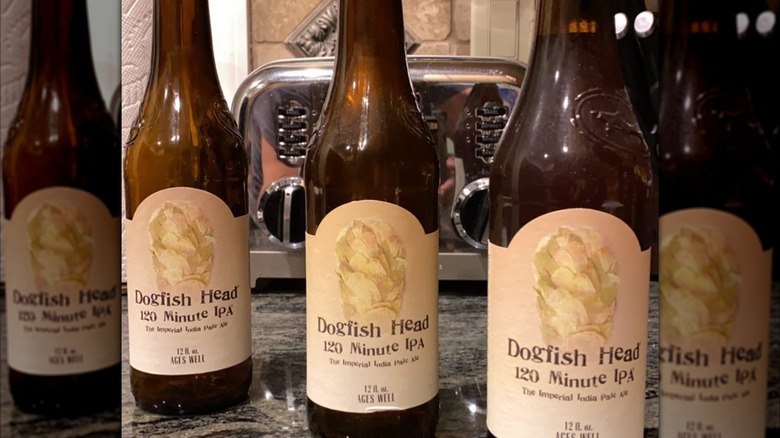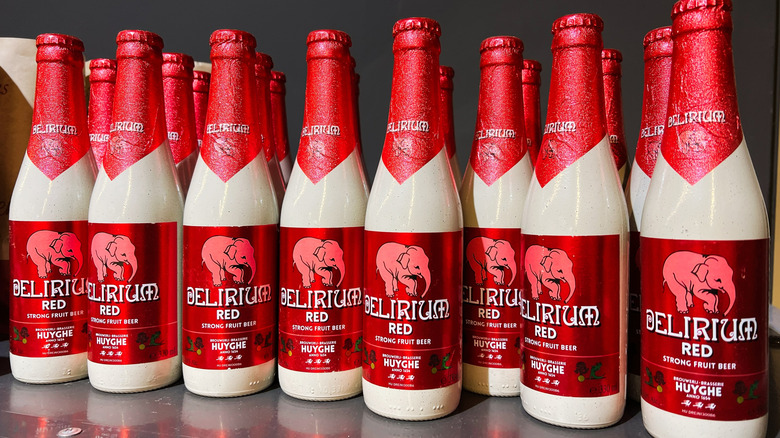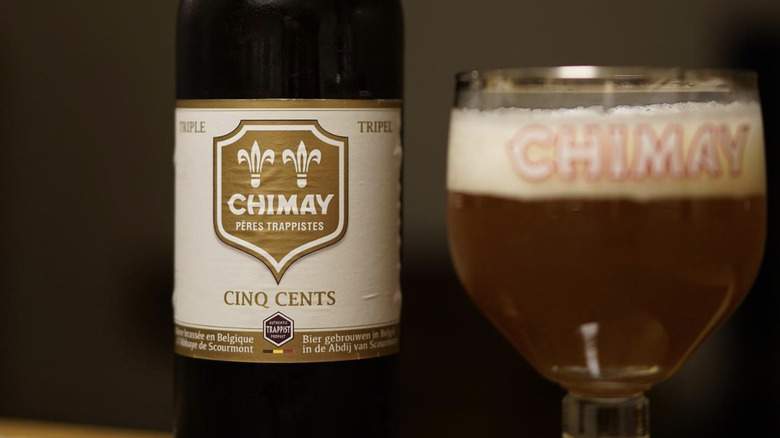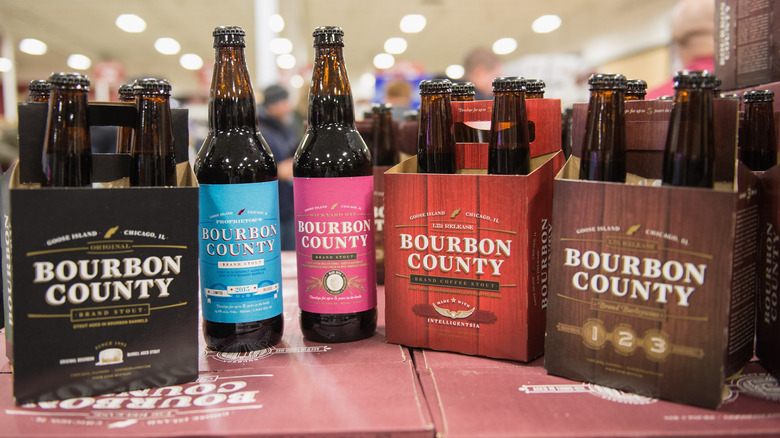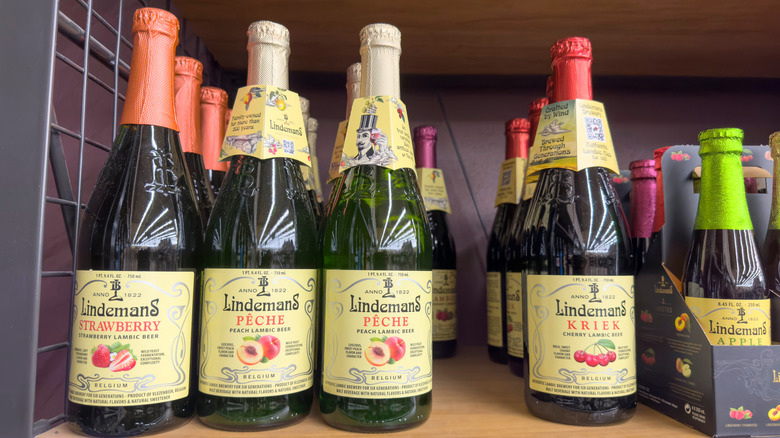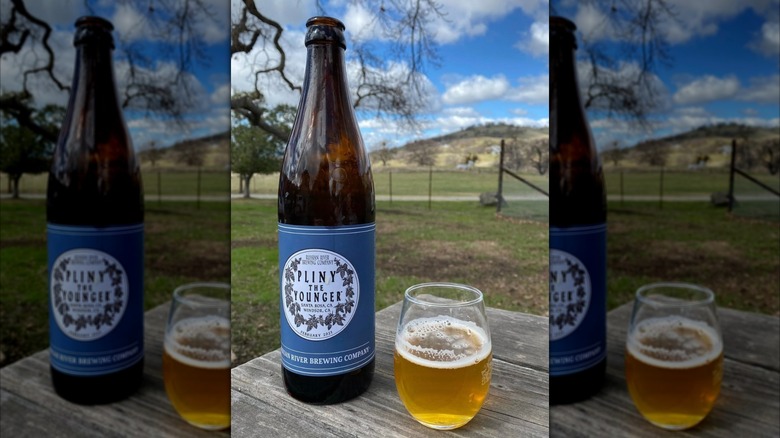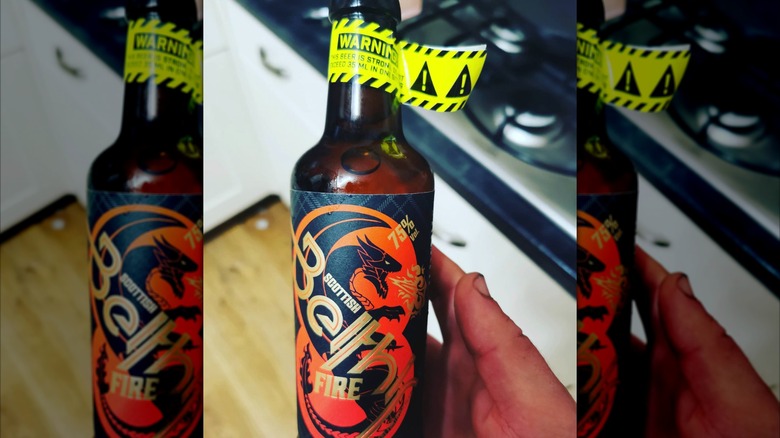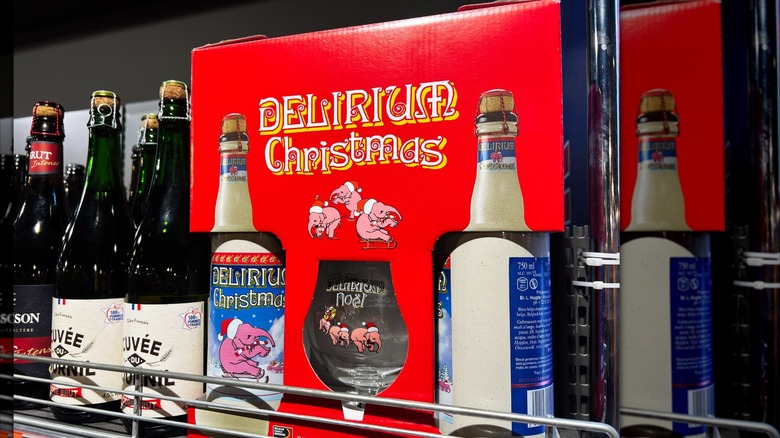9 Beers That Are Always Way Too Expensive
People have been consuming beer for thousands of years, enjoying this grain-based brew for its flavor and celebratory nature. With the explosion of craft beer in America in recent decades, its popularity has only grown, spawning fanciful incarnations from seasonal pumpkin beer to darker stouts and porters. Yet these microbrews can vary widely in price and quality, with some retailing for amounts far above the usual cost.
On average, a six-pack of bottled beer retails somewhere between $8 and $16 in 2025. Yet, there are plenty of beers that cost much more than this, leading some to wonder why some beers seem to warrant larger price tags than others. Are these beers really worth the extra funds, or are these suds simply overpriced for what you get?
For some of these bottles, the product may be more about hype, scarcity, and image than actual taste. It's time to turn our attention to some beers with consistently high prices and examine these costly brews for what they are. It's far better to know what you're getting before you trade in your hard-earned cash for such expensive bevvies, otherwise you may find yourself deeply disappointed.
Dogfish Head 120 Minute IPA
Hard to find at many stores because it's only brewed once a year, Dogfish Head 120 Minute IPA weighs in at about $40 for a four-pack of this limited release imperial IPA. At $10 per single 12-ounce beer that makes this bottled brew more expensive than most pints you'd drink fresh from the tap, let alone a packaged beer. Crafted from high-alpha American hops, this hard-hitting IPA carries an ABV of 15% to 20%, which seems to be both a selling point and a drawback.
Critics call it boozy and overly hoppy, claiming it to be more about International Bitterness Units (or IBU) than taste. Others find it more akin to barleywine than an IPA. It's also a beer you may need to wait to drink. According to some buyers, the hop character can be overwhelming when imbibed fresh as opposed to aged. Several find the boozy taste to mellow after two years, with the flavor peaking at three to five years. Still, many agree that's quite a long time to wait to enjoy this pricey brew.
Delirium Red
Brewed by the award-winning Huyghe brewery and packaged with a signature pink elephant on ceramic bottles, the Delirium line continues to be an ale that always sells for high prices. However, some of these beers don't seem to be worth the amount this brand normally summons. While Delirium Tremens continues to be an award-winning beer, the equally costly cherry-flavored Delirium Red is far less revered. Some reviewers call its taste medicinal, with overpowering cherry notes and a high alcohol content, making it more akin to cough syrup with carbonation. Other buyers have found it much too sweet and almondy, making its usual price of $20 for a pint-sized four pack far too high.
Most agree, Delirium Red tastes nothing like regular beer — standing as a firm departure from other beers in the Delirium range that tend to be less fruit-forward. Their long-established favorite, Delirium Tremens, is a Belgian-style strong blond with a lingering bitterness, while Delirium Nocturne is equally bitter, with elements of caramel, licorice, and chocolate. Considering their overall high price, both stand as better options to this red-headed stepchild.
Allagash Curieux
While many Allagash brews may be priced similar to other beers, Allagash Curieux remains substantially more expensive at $20 or more per cork-sealed, 750-milliliter bottle or $22 for a four-pack. This high cost is likely due to its lengthy brewing process, requiring the tripel beer to be aged for seven weeks in bourbon barrels before combining it with the fresh Belgian-style golden ale. The result is a 10.2% beer embellished with various accents including toffee, wood, vanilla, and bourbon. While Allagash calls this brew its most popular barrel-aged beer, not everyone is a fan.
Many find that the taste does not justify the price, with some calling the beer underwhelming for a tripel, being more faint in flavor and similar to a lager. The bourbon taste is more subtle than what you find in other Belgian tripels, which leaves supporters of this beer style desiring more. Still, this sustainability-focused brewery offers several less costly beers like its widely popular Allagash White, a witbier with an intentionally lighter flavor and an affordable price at $12 per six-pack.
Chimay Cinq Cents White Tripel
While Chimay's Grande Blue Reserve consistently scores high marks, its equally expensive Cinq Cents White Tripel doesn't sit as lofty according to most connoisseurs. Compared to Chimay's other brews, this one comes in with more intense floral notes and bitterness that makes it spicier and hoppier than most Chimay beers. Some buyers have also described the brew as having a soap-like undertone at the finish due to the hops. Critics claim Cinq Cents White is far from a classic tripel, although it is still smooth and herbal.
Most Chimay beers cost around $15 per 750-milliliter bottle or $20 to $25 for a four-pack of 11-ounce bottles. Chimay's brewery offerings always bear a higher price tag as a Trappist beer. To attain the Authentic Trappist Product logo (an honor just 11 breweries currently carry) the beer must adhere to several principles, including being supervised or produced by monks, being made in an abbey environment, and any leftover income being distributed to charity. At least you can rest assured no one is pocketing the extra change you spend on this expensive brew.
Goose Island Bourbon County Stout
Often out of stock due to popularity, Goose Island's Bourbon County Stout comes paired with a steep price tag. While the original County Stout is high at $15 for a 500-milliliter bottle, flavored varieties like the 2024 macaroon stout and vanilla bourbon rye can retail for closer to $25 for a single 500-milliliter brew. That's $25 for a little more than a pint (16.9 ounces to be exact), leaving this craft brew about three times as expensive as draft beer and far too pricey for such a meager size.
Goose Island Bourbon County Original stout is aged for about 14 months in bourbon barrels, allowing it to develop indulgent notes of caramelized sweetness, indulgent fudge, and vanilla. Most reviews for these stouts – which change in flavor from year to year – are overwhelmingly positive, in part because you never know what you're going to get from a year's batch. But that can also be a downside.
Some of the previous stouts, like the 2018 Bourbon County Brand Bramble Rye Stout, have been described as overwhelmingly fruity and jammy, resembling blackberry syrup. A few of Goose Island's signature stouts were even recalled in 2016 after being infected with Lactobacillus acetotolerans, leading to soured batch in about 20% of the 2015 release of Bourbon County. So, while the payoff may be worth it, you're taking a bit of a risk whenever you try this high-priced brew, making this beer an expensive gamble.
Lindemans Fruit Lambics
A brewery that specializes in wild yeasts and spontaneous fermentation (an age-old brewing process without the addition of an administered yeast), Lindemans' Vlezenbeek-based brewery has been in business since 1822. Yet, Lindemans' collection of fruit-forward lambics tends to retail for higher price than many beers, which may be disappointing for some once they see the ABV.
Lindemans Strawberry Lambic costs just under $8 per 12-ounce bottle, and yet its alcohol content is surprisingly modest, with 4.1% ABV. Lindemans' blackcurrant Cassis Lambic is even weaker at 3.5% ABV, despite being priced at $13.99 per 750-milliliter bottle. Many find such prices quite expensive considering Lindeman's lambics don't taste like a traditional lambic at all, instead often possessing a lingering sweetness more akin to a dessert wine than a true lambic — something likely done to appeal to a wider audience.
There's no doubt about it — Lindemans lambics taste nothing like beer at all. Some compare them to fruit wine, others to carbonated candy. Luckily, Lindemans has been releasing a few stronger brews of late. Two of its newest releases, Lindemans d'Or and Lindemans Noir both come equipped with an ABV of 8%. The golden blond Lindemans d'Or uses tropical flavors, while the Noir is more berry focused. While the d'Or has been described as still being very sugary, the Noir seems less so, with acidic fruit elements that curb the sweetness. Both are just as pricey as most Lindemans brews, but at least these have some ABV oomph to back them up.
Pliny The Younger
California-based brewery Russian River first brewed the groundbreaking triple IPA known as Pliny the Younger in 2005, crafting a brew that would become legendary in the beer community. This beer is released once a year (usually in February or March), and people line up outside the Santa Rosa and Windsor locations for hours to purchase this costly quaff, though the brewery limits how many bottles can be bought.
Although the bottles only cost a reported $10 in person, they can retail for 15 times that price when resold on auction sites, making the beer ridiculously expensive for anyone who doesn't live within a driving distance of the brewery (and why it's earned a spot on its list, despite the number of folks who adore it). You have to wonder if this brew is more about hype than flavor, as some who tasted it claim it's not worth the buzz. Also, tasting of its sister beer Pliny the Elder showed that ratings dropped when drinkers were blindfolded. However, Pliny the Younger holds a higher ABV at 10.25%, along with more hops and malt than its predecessor.
Why isn't this beer simply made year-round? Russian River Brewery has indicated the beer is laborious and costly, taking up a substantial amount of tank space at the brewery. In fact, before 2020, you couldn't even purchase bottled versions. However, some speculate that releasing the beer in such a restricted manner could simply be a savvy tactic to artificially create scarcity and heighten demand. It's definitely food, er, beer for thought.
Scottish Beithir Fire
A beer that retails for about $53 or more per roughly 11-ounce bottle, Scottish Beithir Fire by 88 Brewery in Scotland is a staggering beer for both its cost and its fiery flavor. Known as the world's strongest beer, this 75% ABV "beer" starts as a Scottish-style barley ale that is brewed for two months before being blended with Scottish spirit. It is then fermented and filtered three times to remove any lingering impurities. The result: A 75% ABV bottle of dragon's breath.
Its alcohol content is 15 times that of a standard 5% beer, and almost double that of most liquor, prompting the makers of this ultra-potent brew to outfit the bottle's neck with a caution tape-like warning label stating that no more than 35 milliliters (a little over an ounce) should be drunk in a single sitting. The taste? People's facial reactions on YouTube and TikTok will tell you everything. One man reported his tongue went numb. Others have responded with disgust, shock, and abundant coughing. Several have mentioned it feels like liquid fire in your stomach.
Aptly named after the serpentine Beithir dragon of Celtic myth, this brew seems to only resemble a true beer in one way: being sold in a 11.2 ounce brown bottle. Any brew that comes tagged with a yellow warning label is pretty unlikely to be one that is intended for human enjoyment and is best left on the shelf, especially at this price. Luckily for Scottish Beithir Fire, it also comes equipped with an expiration date of 100 years, so it should be just fine gathering some dust.
Christmas beer sets
As the festive season approaches, you're likely to pay a weighty price tag for Christmas beer gift sets that are available everywhere from BevMo! to World Market. Even craft breweries like Clown Shoes, Stone Brewing, and the Bruery have begun hopping on the holiday beer bandwagon, offering personalized gift boxed brews that often range from around $30 to upwards of $125. The drawback? You're likely paying more for the specialty Christmas packaging than anything else, as businesses try to wrap up standard products in bright, shiny packages to capitalize on the gift-giving season and increase sales.
Some of these packages will include a few holiday-themed beers mixed in with other brews, but many just repackage regular products in limited edition packaging to capture consumer attention. This tactic has been used by the wine and liquor industry for years to build brand recognition and encourage spending, and it has been adopted by the beer industry more recently. Taking this into consideration, those intrigued by these festive boxes of beer are better off waiting until the jolly season passes, when these holiday-themed sets go on sale.

